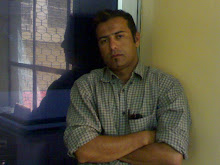
Ulema’s statements against the East India Company were a motivating factor for many among the general masses and the company's army.
The names of leading Ulema who played an important role in the revolt of 1857 are as follows: Mufti Sadruddin Azurda, Allama Fazle Haq Khairabadi, Maulana Faiz Ahmad Badayuni, Maulana Kifayat Ali Kafi Moradabadi, Maulana wahhajjuddin Moradabadi, Mufti Inayat Ahmad Kakorvi, Moulana Rahmatullah Kairanvi, Maulana Dr. Wazir Khan Akkarabadi, and Maulana Imam Baksh Sahbai Dehlavi.
According to several books dealing with the revolution, around 15000 fifteen thousand Ulema were martyred during the War of Independence in 1857.
In one of a heart shaking incidence around 70 Ulema together had been hang by British army on trees near Delhi.
According to one of a book (Tarikh e Riyasat e Bhopal) written by Late Qazi of Bhopal Allama Wajdul hussaini. At the time of 1857 revolt two men from Bhopal ; Fazil Mohammad khan and Jamal Mohammad khan played an important role they raised there sword against British Government in village Gadi near Bhopal and get martyred.
That time in Bhopal also Ulema issued fatwa of Jihad against British Army.
In Sehore Hindu and Muslim together raised their arms against British Goverment.
The Muslims and the Hindus were equally complaining against interfere in their religious affairs by British government. This resulted in the Revolt of 1857 where in the Muslims as well as the Hindus equally participated. One the one side, the Muslim leaders like Bahadur shah Zafar, General Baht Khan Rubella, Prince Faros Shah, Begum Hazrat Mahan, General Azimullah Khan Kanpuri, Nawab Tafazzul Husain, Nawab Majduddin Moradabadi, Nawab Mahmood Khan Bijnori were spending their energies to make this Revolt a successful one, on the other, Nana, the Peshwa, Tatia Tope. Rani Lakshamibai, Ram Kunwar sing, Raja Nahir Singh, Rao Tula Ram were offering their sacrifices.
The rebellion was also characterized by military revolts by sepoys of the Bengal Presidency army; in which Mangal Panday played a crucial role. The presidency consisted of Bengal, Bihar, and Uttar Pradesh. However, most rebel soldiers were from the Uttar Pradesh region, and, in particular, from the Northwest Provinces Oudh, and many came from higher cast.
The sepoys were a combination of Muslim and Hindu soldiers. The final spark was provided by the controversy over the new Pattern 1853 Enfield rifle. To load the new rifle, the sepoys had to bite the cartridge open. It was believed that the paper cartridges that were standard issue with the rifle were greased with lard (pork fat) which was regarded as unclean by Muslims, or tallow (beef fat), regarded as a sin to Hindus.
The rebellion is also known as India's First War of Independence,
SHARJEEL.

